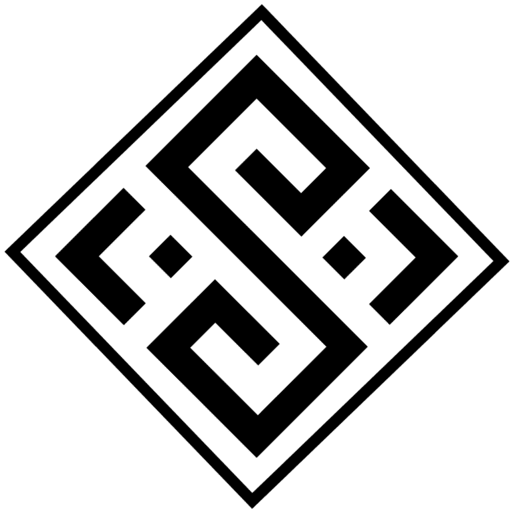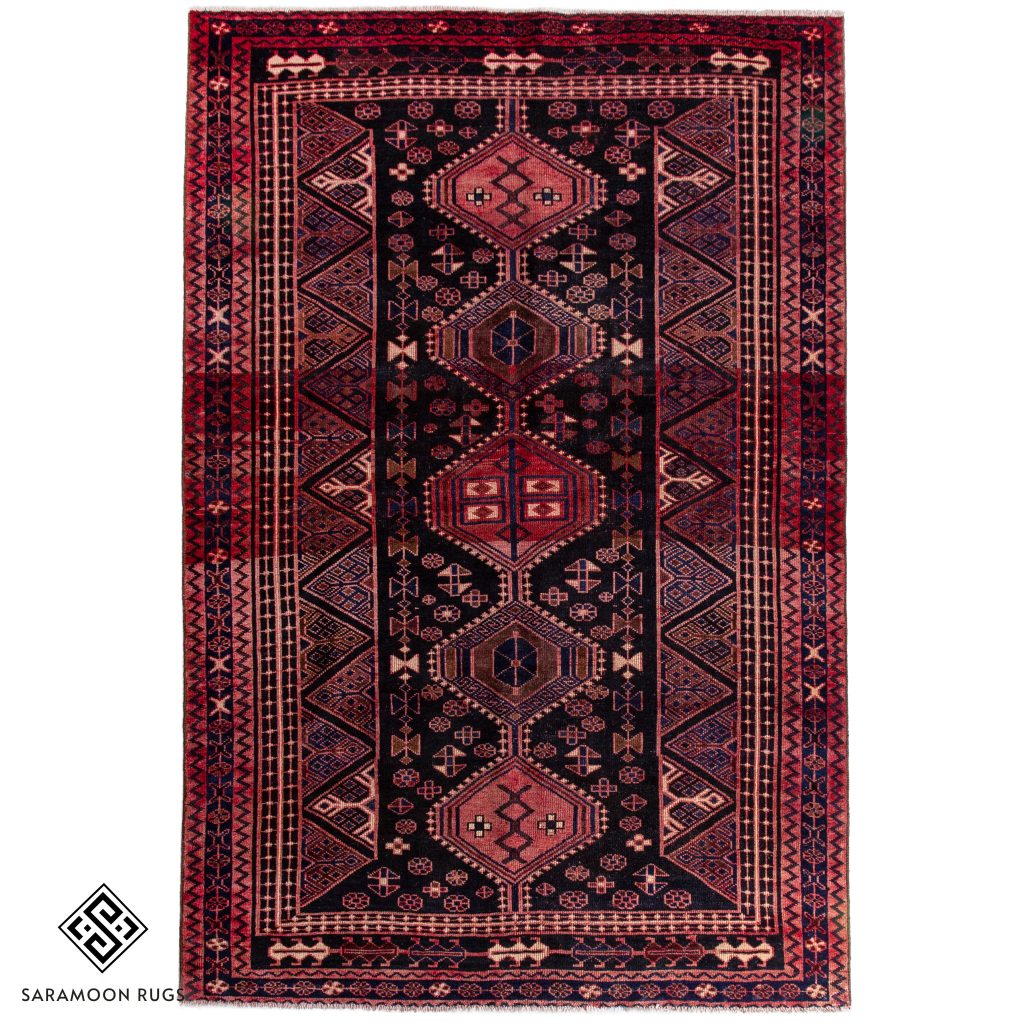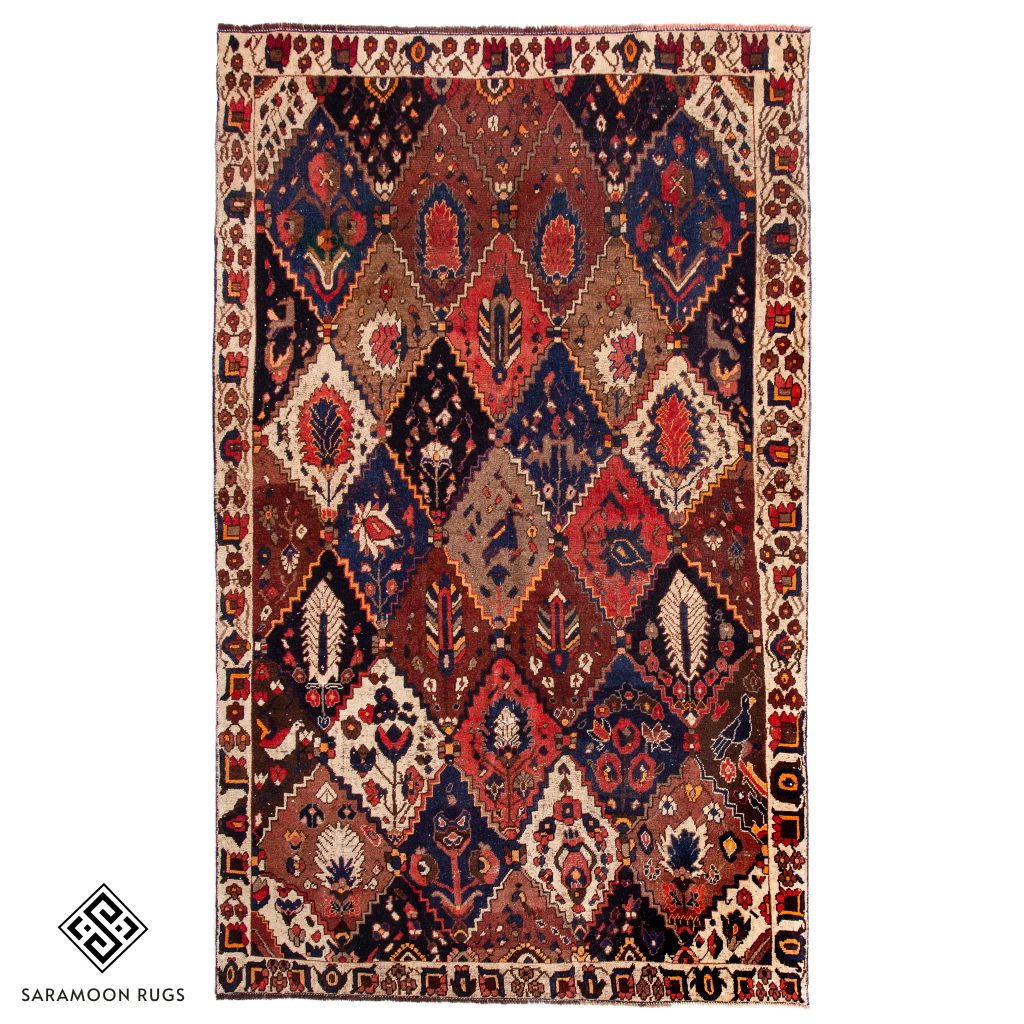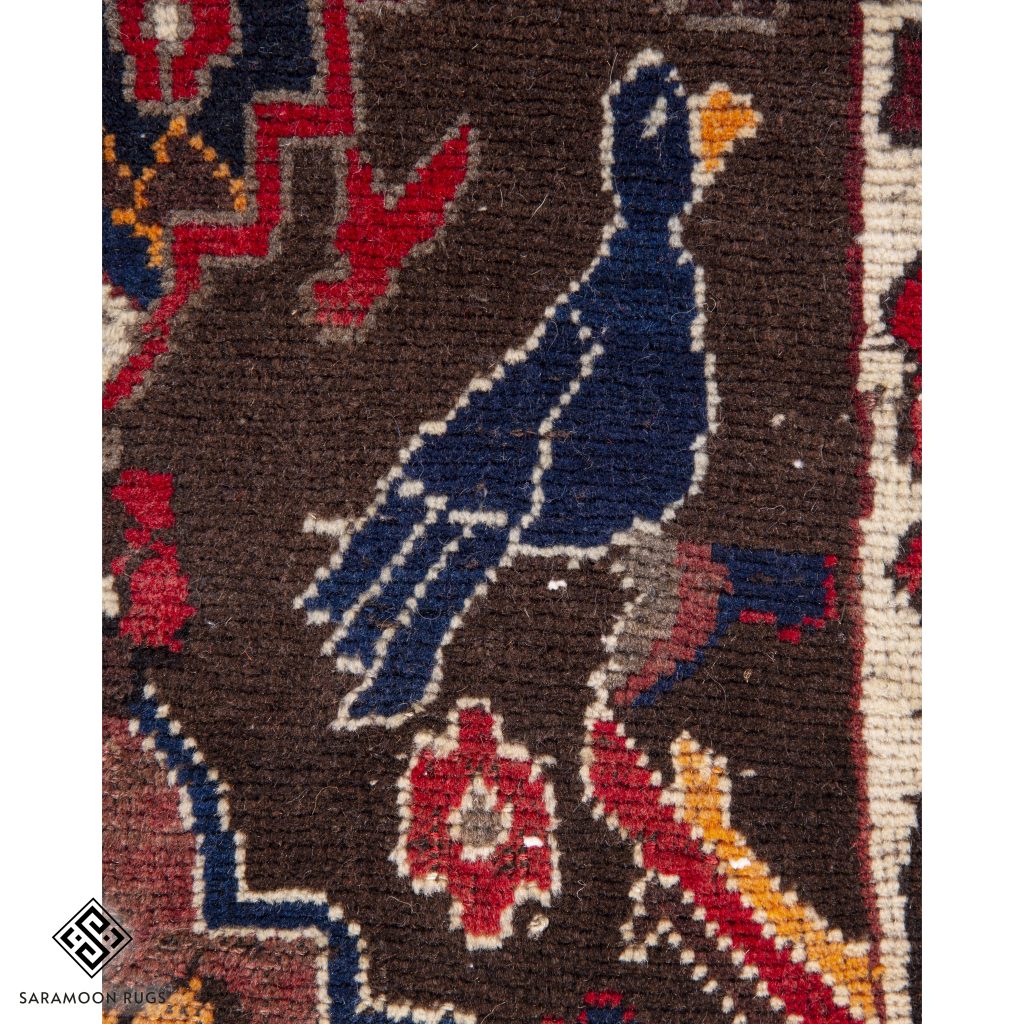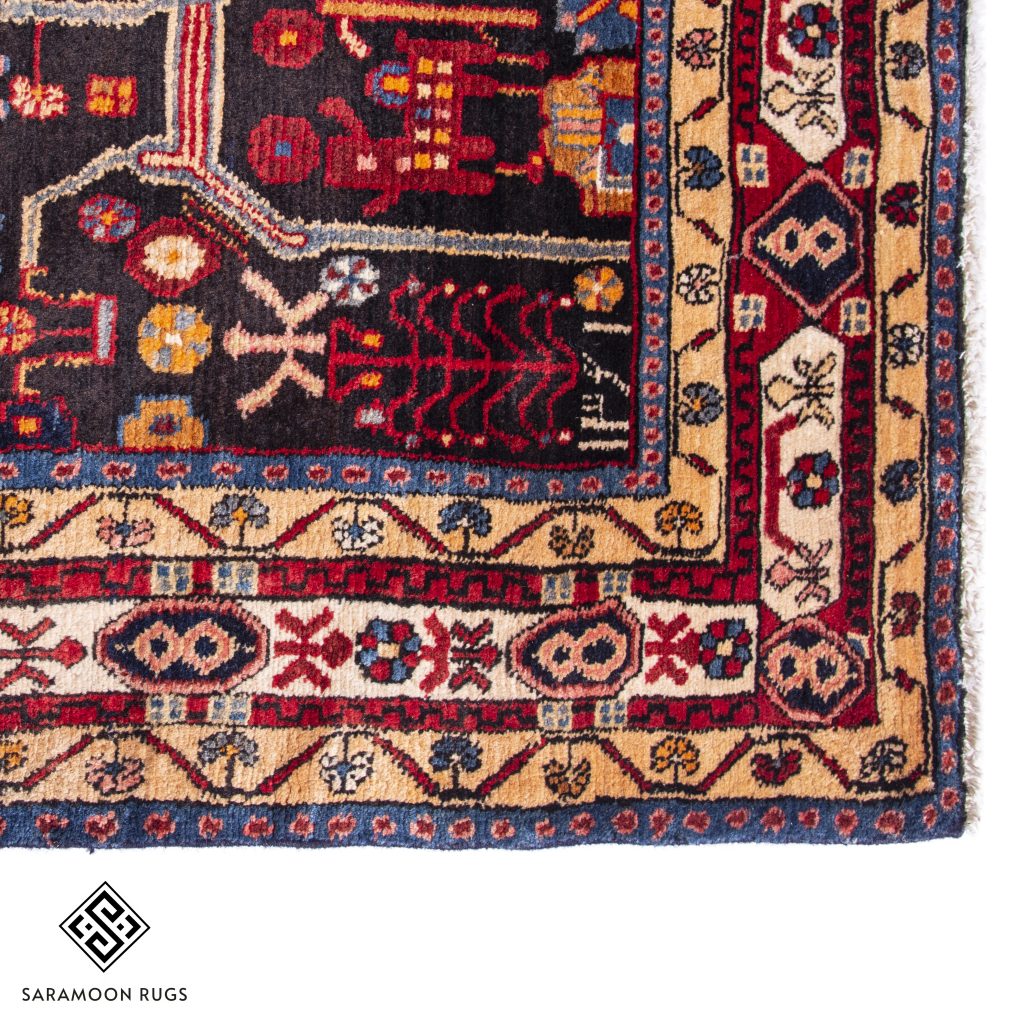The name of the Bakhtiari tribe and the province of Chaharmahal are intertwined with a group of people who are considered one of the oldest and most authentic Iranians, and whose sense of pride has always been on their tongues. However, Bakhtiari handwoven carpets cannot be limited to just the tribes, and the weavers from the villages and cities of this province who weave carpets should not be ignored.
In the province of Chaharmahal, art and the production of various handicrafts are intertwined with the blood and sweat of its people, and carpets are only one option and the most important among the various models of handicrafts in this city.
Bakhtiari women and girls use a method that is rarely seen in other parts of Iran and even the world. They do not use any pre-designed pattern or chart for their weaves and instead use mental images to create their weaves.
Creating such attractive and beautiful works without a pattern shows the artistry embedded in the blood of the people of this region. They only use patterns when they want to produce custom work.
By not using a pattern or design for your own weave, you will unconsciously prevent repetition and similarity of patterns, and each of your works will be a unique and unmatched model. This is the main characteristic of Bakhtiari handwoven carpets.
Since handwoven carpets are produced in various types and designs in this region of Iran, we will start by taking a general look at the cities and villages that are the main centers of Bakhtiari handwoven carpets and review them together.
Two general categories exist for weavers in the province of Chaharmahal. All weaving regions can be classified into one of these two categories:
- Qashqai carpets, which can be considered the art of Qashqai Turkmens in Chaharmahal.
- Bakhtiari handwoven rugs, which can be attributed to the Bakhtiari ethnic group and are the result of the weaving of Bakhtiari and Luri Bakhtiari tribes.
In short, if we want to briefly introduce the centers of Bakhtiari handwoven rugs and Chaharmahal carpets, we should say: Saman, Ashkezar, Pirbalout, Arjaneg, Vardenjan, Faridan, Borujen, Boldaji, Fereydan, Hiraqan, Babahaydar, Ardal, and the Olad tribe. Below, we will examine the most important of these options in more detail:
Partial review of carpet weaving cities and villages.
Baladaghi: A city located in the southern part of this province, and the carpets woven in this city are generally of single weft and coarse texture, which are very durable and long-lasting.
Shahrekord: This city, which is the center of Chaharmahal and Bakhtiari province, is the center of producing double-weft carpets, most of which have bright and shiny colors and are woven in broken designs.
Fereydun: A small city in the northern part of the province, mostly inhabited by Armenians, and the woven carpets in it are almost easily recognizable everywhere because the use of bright and cheerful colors such as cream, pink and bright green has made the products of this region special. The type of weave used in this area is also a coarse pattern.
Chelashtr: Or Chaleshtar, if you are looking to buy an inexpensive hand-woven carpet, don’t look for this village! It is a village near Shahrekord, which is the main center of the delicate Bakhtiari hand-woven carpets, and usually only special and first-class products are woven.
Most of the carpets produced in this village have used clay and brick designs for production, and the issue that has made them special is the use of semi-circular designs.
Samān: In this area, like Chelashtr, there is a tendency to weave high-quality double-weft products, and a subject that can be considered the symbol of the carpets of this area is the use of reddish-brown color in their semi-broken patterns, trellises, and brick designs.
Designs and diversity of Bakhtiari hand-woven carpets.
When it comes to the designs and patterns of Bakhtiari handmade carpets, the presence of a variety of colors and patterns is the most prominent feature that can be discussed.
The use of cotton warp and wool weft in Bakhtiari carpets has made the production of this region much lighter in weight compared to other hand-woven carpets, making it a suitable option for choosing second-hand hand-woven carpets, especially in terms of quality.
In addition to this, the use of diamond and square-shaped patterns that generally depict animal and plant motifs within them has made the hand-woven carpets of this region particularly authentic and attractive.
In the previous sections, we mentioned that the woven patterns in Chaharmahal province are classified into two main categories: Ghashghai and Bakhtiari. If we want to name all these patterns in a comprehensive manner, we must say:
A) Bakhtiari Hand-Woven Carpets
- Kheshti (animal, floral, or both)
- Taranji (small diamond-shaped motifs)
- Sarv va Kaj (cypress and pine trees)
- Samavari (Haghayeghi design)
- Gol-e-Mina (Mina’s flower)
- Gol-dani Sharabeh (wine vase)
- Gol-dani va Derakhti (flower vase and tree)
B) Ghahshghai Hand-Woven Carpets
- Taranji (one pool)
- Shakarloo (two pools)
- Bandi-e-Alvan (striped)
Note: Among the various designs and patterns mentioned above, the Kheshti design, which is a very well-known option, is often considered equivalent to Bakhtiari hand-woven carpets, and among all the models, the Kheshti Baghi design, which is adorned with plants and flowers on its bricks, is a very popular option.
Features of Bakhtiari Hand-Woven Carpets
When it comes to identifying the features of a Bakhtiari handwoven rug, you need to have a general view of the subject and examine all the necessary aspects related to a rug.
In the previous sections, we have talked sufficiently about the regions and patterns of Bakhtiari rugs, and here we will explain the appearance factors that can have an impact on your buying decision and pricing.
The colors of Bakhtiari rugs.
When talking about the characteristics of a hand-woven Bakhtiari rug, you need to have a general understanding of the subject and examine all the necessary aspects you need to know about a rug. In previous sections, we talked enough about the regions and woven designs, and here we will explain the visual aspects that can have an impact on your choice for buying and pricing:
The color of Bakhtiari rugs is a topic that we could especially introduce as a primary advantage in the past. Bakhtiari tribal women, during special times and when they were on their migrations, collected and dried plants that could be used naturally to dye the fibers of their rugs. After this stage, with the knowledge they had about these plants, they boiled them in water into various patterns and extracted their color naturally by using the teeth of sour pomegranates. They obtained natural and high-quality colors. However, it can be said that due to the high labor intensity in modern hand-woven rugs, this type of quality natural dyeing is unfortunately becoming obsolete and giving way to the use of chemical dyes.
After this topic, it’s time to choose the type of colors used, in line with the selected designs. The type and method of color selection in Bakhtiari hand-woven rugs are one of the most well-known characteristics of these rugs.
The type of lacquer color used and the special green of Bakhtiari rugs are among the most important color features of rugs in this province, which differs from similar features in other Iranian rugs. The colors used in these rugs are mostly in the fields of red, light blue, dark blue, green, orange, and yellow.
The dimensions of Bakhtiari hand-woven rugs
Although Bakhtiari carpets are a suitable option in terms of diversity, their size is usually small. The dimensions of its prayer rugs are 2.40 × 1.30 meters, and its average size is 3.4 × 2.5 meters. There are also larger size carpets, and sometimes square-shaped carpets can also be seen among them.
In Bakhtiari hand-woven carpets, the side weaves are often wide and long, and the use of knots is prevalent among weavers.
